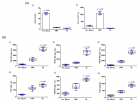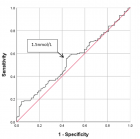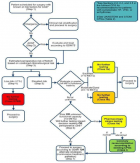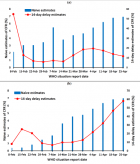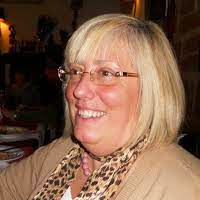Abstract
Research Article
The Theory of Elements
Abdellah El-Mourabet*
Published: 07 January, 2025 | Volume 8 - Issue 1 | Pages: 001-009
The spin of a physical object is a vector which is held by the self-rotation axis of the object. Spin measures the intensity of the self-rotation of the object around its axis. The sudden and forceful, but direct contact of two bodies is known as collision. The collision is supposed to be perfectly elastic. Newton stated the law of universal attraction. The formula of Biot & Savart is unavoidable if we are interested by electromagnetism; this formula led to the famous equations of Maxwell. Curiously, this formula includes a vector product which may seem quite unusual. An electric current, which flows in an electric wire, creates, by induction, another current of small particles, all around the wire. The colors are intensities of reflections, due to the self-rotation of atoms of the colored objects. The stars novas are due to sudden appearance of storms of space winds, which strike the stars, and which make them self-rotate faster and then it became brighter.
Read Full Article HTML DOI: 10.29328/journal.ijpra.1001104 Cite this Article Read Full Article PDF
References
- Goren E, Galili I. Newton’s Law - A Theory of motion or force? J Phys Conf Ser. 2019;1287:012061. Available from: https://iopscience.iop.org/article/10.1088/1742-6596/1287/1/012061
- Fatkhurrohman MA, Hamidah I, Samsudin A, Suhandi A. The Development of Theory and Application of Newton’s Law: A Systematic Literature Review. Int J Seminar Educ Soc Sci Appl Sci. 2024;9(19):302-311. Available from: https://doi.org/10.18502/kss.v9i19.16509
- Butto N. A New Theory for the Essence and Origin of Electron Spin. J High Energy Phys Gravitation Cosmology. 2021;7:1459-1471. Available from: https://doi.org/10.4236/jhepgc.2021.74088
- Saw E-W, Meng X. Intricate relations among particle collision, relative motion and clustering in turbulent clouds: computational observation and theory. Atmos Chem Phys. 2022;22:3779–3788. Available from: https://doi.org/10.5194/acp-22-3779-2022
- Stocklmayer SM, Treagust DF. A historical analysis of electric currents in textbooks: A century of influence on physics education. Sci Educ. 1994;3:131–154. Available from: https://philarchive.org/citations/STOAHA/order=updated?sqc=off&freeOnly=&filterByAreas=off&langFilter=off&url=&offset=0&onlineOnly=&proOnly=off&total=4&showCategories=off&direction=citations&page_size=50&publishedOnly=off&eId=STOAHA&hideAbstracts=off&newWindow=off&categorizerOn=off
- Arnkil H, Fridell Anter K, Klarén U. Colour and Light: Concepts and Confusions. In: Conference: In Color We Live: Color and Environment. Interim Meeting of the International Colour Association (AIC); 2012 Sep 22-25; Taipei, Taiwan. Available from: https://www.researchgate.net/publication/256089598_Colour_and_Light_Concepts_and_Confusions
- Weight A, Evans A, Naylor T, Wood JH, Bode MF. Nova secondary stars, mass-transfer rates and distances. Mon Not R Astron Soc. 1994;266(3):761–768. Available from: https://doi.org/10.1093/mnras/266.3.761
Figures:

Figure 1

Figure 2

Figure 3

Figure 4

Figure 5

Figure 6

Figure 7

Figure 8

Figure 9

Figure 10

Figure 11

Figure 12

Figure 13

Figure 14

Figure 15

Figure 16

Figure 17

Figure 18

Figure 19
Similar Articles
-
High energy HF (DF) lasersVictor V Apollonov*. High energy HF (DF) lasers. . 2018 doi: 10.29328/journal.ijpra.1001001; 1: 001-016
-
Magnetohydrodynamic CNTs Casson Nanofluid and Radiative heat transfer in a Rotating ChannelsZahir Shah*,Abdullah Dawar,Saeed Islam,Muhammad Idress,Waris Khan. Magnetohydrodynamic CNTs Casson Nanofluid and Radiative heat transfer in a Rotating Channels. . 2018 doi: 10.29328/journal.ijpra.1001002; 1: 017-032
-
Sounding procedure for characterization of big fusion reactor chambers by means of a compact neutron source with a nanosecond pulse durationVA Gribkov*,B Bienkowska,S Jednorog,M Paduch,Tomaszewski. Sounding procedure for characterization of big fusion reactor chambers by means of a compact neutron source with a nanosecond pulse duration. . 2018 doi: 10.29328/journal.ijpra.1001003; 1: 033-051
-
Gravitation - Flat Power FieldSA Orlov*. Gravitation - Flat Power Field. . 2018 doi: 10.29328/journal.ijpra.1001005; 1: 067-073
-
Moving space-matter as the basis of the intelligence in the Physical WorldBoris S Dizhechko*. Moving space-matter as the basis of the intelligence in the Physical World. . 2019 doi: 10.29328/journal.ijpra.1001007; 2: 001-003
-
Nanotechnology to improve the biofouling and corrosion performance of marine paints: from lab experiments to real tests in seaGeorge Kordas*. Nanotechnology to improve the biofouling and corrosion performance of marine paints: from lab experiments to real tests in sea. . 2019 doi: 10.29328/journal.ijpra.1001012; 2: 033-037
-
Biological membranes: The laboratory of fundamental physicsSamo Kralj*,Mitja Kralj. Biological membranes: The laboratory of fundamental physics. . 2019 doi: 10.29328/journal.ijpra.1001013; 2: 038-040
-
Biodegradation of gold and platinum implants in rats studied by electron microscopyLudwig Jonas*,Hendrik Kosslick,Hermann Sauer,Tino Just,Ursula Vick,Gerhard Fulda. Biodegradation of gold and platinum implants in rats studied by electron microscopy. . 2019 doi: 10.29328/journal.ijpra.1001014; 2: 041-048
-
Modeling of A.I based Inhalation for Advanced Life Support System DevelopmentMd. Sadique Shaikh*,Tanvir Begum. Modeling of A.I based Inhalation for Advanced Life Support System Development. . 2019 doi: 10.29328/journal.ijpra.1001015; 2: 049-050
-
Bio-moleculear thermal oscillator and constant heat current sourceR Panahinia*,S Behnia. Bio-moleculear thermal oscillator and constant heat current source. . 2019 doi: 10.29328/journal.ijpra.1001016; 2: 051-055
Recently Viewed
-
The Fundamental Role of Dissolved Oxygen Levels in Drinking Water, in the Etiopathogenesis, Prevention, Treatment and Recovery of Cerebral Vascular Events (Stroke)Arturo Solís Herrera*. The Fundamental Role of Dissolved Oxygen Levels in Drinking Water, in the Etiopathogenesis, Prevention, Treatment and Recovery of Cerebral Vascular Events (Stroke). J Nov Physiother Rehabil. 2025: doi: 10.29328/journal.jnpr.1001064; 9: 001-006
-
Management of Non-contact Injuries, Nonspecific Chronic Pain, and Prevention via Sensory Conflicts Detection: Vertical Heterophoria as a Landmark IndicatorEric Matheron*. Management of Non-contact Injuries, Nonspecific Chronic Pain, and Prevention via Sensory Conflicts Detection: Vertical Heterophoria as a Landmark Indicator. J Nov Physiother Rehabil. 2024: doi: 10.29328/journal.jnpr.1001057; 8: 005-013
-
Texture of Thin Films of Aluminum Nitride Produced by Magnetron SputteringStrunin Vladimir Ivanovich,Baranova Larisa Vasilievna*,Baisova Bibigul Tulegenovna. Texture of Thin Films of Aluminum Nitride Produced by Magnetron Sputtering. Int J Phys Res Appl. 2025: doi: 10.29328/journal.ijpra.1001106; 8: 013-016
-
Clinical Case of Successful Therapy for the Patient with Autism by use of Fetal Stem CellsAA Sinelnyk*, SG Shmyh, IG Matiyashchuk, MO Klunnyk, MP Demchuk, OV Ivankova, OO Honza, IA Susak, MV Skalozub, DV Vatlitsov, KI Sorochynska. Clinical Case of Successful Therapy for the Patient with Autism by use of Fetal Stem Cells. J Stem Cell Ther Transplant. 2024: doi: 10.29328/journal.jsctt.1001043; 8: 048-053
-
Surgical Management of Extrahepatic Biliary Neuroendocrine Tumors: A Case ReportNegar Ostadsharif,Alireza Firouzfar,Parto Nasri,Behnam Sanei*. Surgical Management of Extrahepatic Biliary Neuroendocrine Tumors: A Case Report. Arch Case Rep. 2025: doi: 10.29328/journal.acr.1001120; 9: 004-007
Most Viewed
-
Evaluation of Biostimulants Based on Recovered Protein Hydrolysates from Animal By-products as Plant Growth EnhancersH Pérez-Aguilar*, M Lacruz-Asaro, F Arán-Ais. Evaluation of Biostimulants Based on Recovered Protein Hydrolysates from Animal By-products as Plant Growth Enhancers. J Plant Sci Phytopathol. 2023 doi: 10.29328/journal.jpsp.1001104; 7: 042-047
-
Sinonasal Myxoma Extending into the Orbit in a 4-Year Old: A Case PresentationJulian A Purrinos*, Ramzi Younis. Sinonasal Myxoma Extending into the Orbit in a 4-Year Old: A Case Presentation. Arch Case Rep. 2024 doi: 10.29328/journal.acr.1001099; 8: 075-077
-
Feasibility study of magnetic sensing for detecting single-neuron action potentialsDenis Tonini,Kai Wu,Renata Saha,Jian-Ping Wang*. Feasibility study of magnetic sensing for detecting single-neuron action potentials. Ann Biomed Sci Eng. 2022 doi: 10.29328/journal.abse.1001018; 6: 019-029
-
Pediatric Dysgerminoma: Unveiling a Rare Ovarian TumorFaten Limaiem*, Khalil Saffar, Ahmed Halouani. Pediatric Dysgerminoma: Unveiling a Rare Ovarian Tumor. Arch Case Rep. 2024 doi: 10.29328/journal.acr.1001087; 8: 010-013
-
Physical activity can change the physiological and psychological circumstances during COVID-19 pandemic: A narrative reviewKhashayar Maroufi*. Physical activity can change the physiological and psychological circumstances during COVID-19 pandemic: A narrative review. J Sports Med Ther. 2021 doi: 10.29328/journal.jsmt.1001051; 6: 001-007

HSPI: We're glad you're here. Please click "create a new Query" if you are a new visitor to our website and need further information from us.
If you are already a member of our network and need to keep track of any developments regarding a question you have already submitted, click "take me to my Query."






